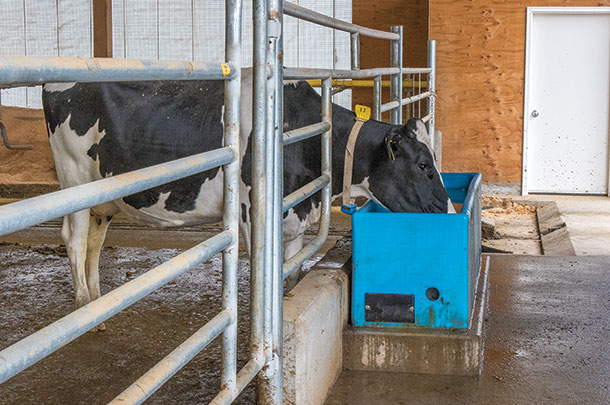

When it comes to the well-being of your cattle, everything counts, from the feed you use to the way the cattle trough is designed, how much time the animals spend outdoors, and so on. Whether you have a small or large herd of cattle, building your own feed troughs can prove to be more convenient as far as costs are regarded.
If you don’t know where to start, though, you might want to check out this post for more information on the usefulness of a trough and how to build a feed trough for your cattle.
No matter the size of your farm, using a specific feeding system will help you in various ways. First of all, the feed won’t get wasted when given in a certain container. The cattle will get used to a certain “dining” area and will resort to it whenever they need to.
By using feeding troughs, you will get to feed several animals at the same time and decide what or how much feed gets added to that trough so you can control the feed quantity they can eat. Plus, they will help you keep your farm organized and make it easier for you to keep a record of the cattle’s feed intake.
One of the first benefits of a homemade cattle trough is the personalized design. Although the market provides a variety of such products, you may browse through lots of models and still be unable to find the right trough for your needs.
By building your own cattle trough, you get to choose the material as well as the dimensions of the trough. Not to mention that if you have a larger herd and you need a larger feed container, it is easier to make one that will accommodate larger feed quantities
Before buying the materials you need to build your own cattle trough, there are some advantages and disadvantages you need to consider. The market offers plastic and metal troughs, therefore, if you want to build one, you will have to choose one of the two materials. Sure, there is always the possibility to go the good old way and create a wooden trough yet finding quality wood that will last might be more difficult these days.
If you’ve narrowed down your list of options to plastic and metal and you’re still not sure about which one to use, there are some things you need to consider. Plastic troughs are lightweight and easy to shape. Moreover, once you’ve built the trough, it is easy to install and move it. Plus, plastic troughs can easily connect to other materials.
Such items won’t suffer from corrosion or rust. However, they will break or crack more easily as they are less resistant to impacts than metal troughs. Besides that, it is a bit more difficult to build a large plastic trough and you will also need a sturdy external framework to support it.
Metal troughs are stronger than plastic ones and they withstand weather and heat as long as they are properly and regularly cleaned and maintained. What’s more, you can build them in larger sizes. The major downside of metal troughs is that, if they don’t get proper maintenance, they are susceptible to corrosion and rust. Also, since they are heavier and bulkier, it is more difficult to install them.
If you’re interested in a trough that is both durable and easy to build, you might want to go for a plastic trough. It will not only stand the test of time even if you use it for large animals such as cattle but it is also easy to move from one place to another and thus easy to adapt to your various needs.
One simple way to build a plastic trough is by cutting a larger plastic barrel, let’s say a 50-gallon container, into two halves with the help of a reciprocating saw. Make sure you clean the interiors of the two smaller containers thoroughly before adding any feed.
You will also need a 4-by-4 material, a drill, a few large wood screws, and, of course, protective equipment. Cut the material to obtain two platforms for the two containers. Make sure you cut it to fit the size of the plastic trough. Add the platform to the bottom of the trough after you’ve drilled a few holes in the plastic trough. Use wood screws to secure it in place.
To prevent water retention or mold from building up, you can drill several drain holes in the plastic material. Make sure the platform is heavy enough to make it difficult for the cattle to move it even when there is little feed inside the trough.
If you want to spread the troughs over a larger area, you can cut the barrel into three or several smaller containers. This depends on the dimensions of the plastic barrel you have, though. You can also attach the two halves to a corral system if you want a permanent feeder.
In case you have just a small number of cows, you can easily use various items you have at home as troughs. Buckets are a popular choice. Some farmers use tires as troughs but they attach a platform to the bottom to prevent food waste.
Wood troughs are relatively easy to make. The downside is that such troughs don’t last too long, especially when left outside where they are exposed to various elements such as rain and wind. Metal troughs are also a great choice thanks to their longevity yet they require frequent maintenance in order to prevent rust from forming and thus from reaching the feed.
No matter the type of trough you decide to build, always use protective equipment such as gloves and safety glasses when power tools are involved. Also, think of the type of feed you will use it for. This will get you closer to making the right decision.
 Contact Jaguza Support
Contact Jaguza Support